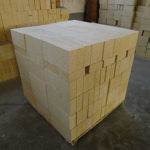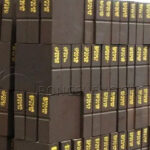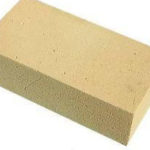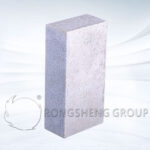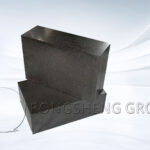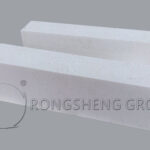When selecting carbon bricks, factors such as thermal conductivity, porosity, and erosion resistance must be considered comprehensively to avoid simply pursuing high thermal conductivity while neglecting other properties. Different blast furnaces have different cooling intensities and smelting conditions, so carbon blocks with appropriate properties must be matched according to actual needs.
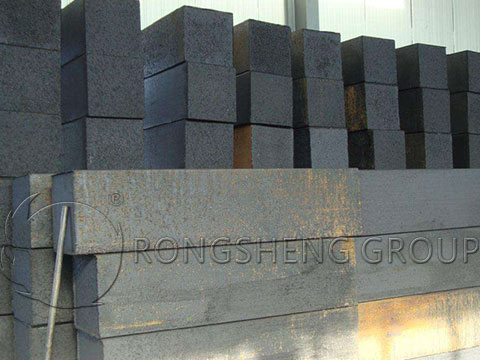
Thermal Conductivity of Carbon Bricks
The thermal conductivity of carbon bricks varies due to factors such as manufacturing process, raw material ratio, and operating temperature. Below are typical data and characteristics of the thermal conductivity of carbon blocks under different scenarios:
Carbon Bricks for Blast Furnaces
- Ordinary carbon bricks: Thermal conductivity is generally 3.5-5.0 W/(m·K), suitable for early-stage, low-intensity smelting environments.
- Microporous carbon bricks: Thermal conductivity is typically 10-18 W/(m·K) (at 300℃), improved through optimized pore structure and raw material ratios.
- Ultra-microporous carbon bricks: Thermal conductivity can reach 18-33 W/(m·K) (at 300℃), with some high-end products exceeding 30 W/(m·K) at specific temperatures, commonly used in critical components of large blast furnaces.
Room Temperature Thermal Conductivity
The thermal conductivity of some carbon blocks at room temperature (20℃) is approximately 1.7-10 W/(m·K). However, in practical applications, higher-temperature thermal conductivity is more important, as blast furnace operating temperatures are typically 1450-1530℃.
Influencing Factors
- Raw Materials: Adding high thermal conductivity materials such as graphite and silicon powder can significantly improve thermal conductivity.
- Processing: Pressure molding, resin binders, and high-temperature firing processes help reduce porosity and improve thermal conductivity.
- Temperature: The thermal conductivity of most carbon blocks increases with increasing temperature. However, some carbon bricks containing graphite may experience a decrease in thermal conductivity at high temperatures.
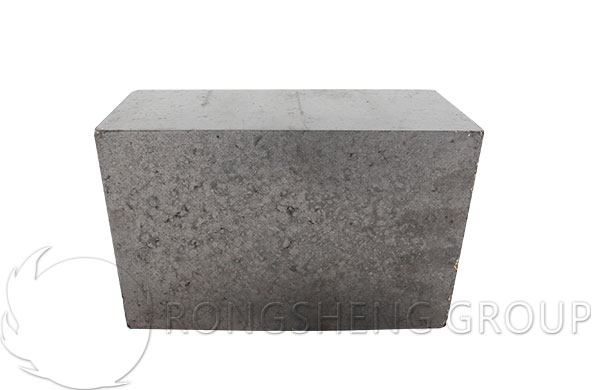
What is the service life of carbon bricks?
The service life of carbon bricks varies depending on various factors. Below are approximate service life ranges for some common application scenarios for reference:
Blast Furnace Hearth and Bottom Carbon Bricks
- Ordinary microporous carbon bricks: Service life is generally over 10 years, with some reaching around 15 years.
- Ultra-microporous carbon bricks: High-performance carbon blocks such as Japan’s BC-8SR and Germany’s 7rdn have a service life of 15-22 years.
- Molded small carbon bricks: Products from the USA’s NMA and NMD typically have a service life of 10-15 years, depending on usage conditions and maintenance.
Carbon Bricks for Submerged Arc Furnaces
In submerged arc furnaces such as ferronickel and ferromanganese furnaces, the service life of ordinary carbon bricks is relatively short, generally not exceeding 5 months. If ultra-microporous carbon bricks are used and the masonry process is optimized, the service life can be extended to around 7 months.
Carbon bricks for other industrial furnaces
In some non-ferrous metal smelting furnaces, chemical furnaces, etc., the service life of carbon blocks is usually 5-10 years, depending on factors such as furnace temperature, atmosphere, and material corrosivity.
Key factors affecting the service life of carbon bricks:
- Materials and manufacturing processes: The degree of microporosity, thermal conductivity, and erosion resistance directly affect service life.
- Usage conditions: High temperatures, molten iron/slag erosion, thermal stress, and oxidizing environments play a crucial role in the wear and tear of carbon bricks.
- Maintenance and management: Proper construction techniques, regular inspections, and timely repairs can extend the service life of carbon bricks.
Note that the above data is for reference only. Actual service life needs to be comprehensively evaluated based on the specific application scenario, the quality of the carbon blocks, and the usage and maintenance conditions.
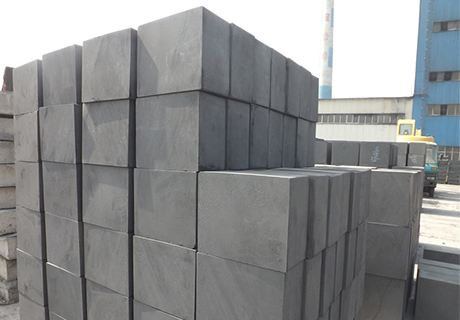
The Impact of Carbon Brick Manufacturing Process on Service Life
The manufacturing process of carbon bricks has a significant impact on their service life, mainly in the following aspects:
Raw Material Selection and Processing
Aggregates and Powders: The purity, particle size distribution, and pretreatment (such as roasting and drying) of high-quality anthracite, coke, and other aggregates directly affect the strength, density, and erosion resistance of carbon blocks. For example, high-purity, low-ash aggregates can reduce the negative impact of impurities on carbon brick performance, improving its high-temperature resistance and slag penetration resistance.
Binders: The performance and dosage of coal tar pitch or resin binders are crucial to the bonding strength, residual carbon content, and thermal conductivity of carbon bricks. Suitable binders can enhance the structural stability of carbon bricks, reduce porosity, and improve thermal shock resistance and erosion resistance.
Molding Process
Pressure Molding: High-pressure molding processes such as extrusion and die molding can make the carbon brick particles tightly packed, reducing porosity and increasing bulk density and mechanical strength. For example, hot-molded small carbon bricks, through simultaneous molding and electric firing, can rapidly carbonize the binder, reduce open pores, and significantly improve thermal conductivity and erosion resistance.
Molding size and shape: Appropriate carbon brick size and shape design can reduce lining gaps and improve the overall sealing and stability of the furnace lining. Large carbon blocks or specially shaped carbon bricks can better adapt to the structural requirements of equipment such as blast furnaces, reducing localized stress concentration and the risk of erosion.
Firing Process
Firing Temperature and Time: Appropriate firing temperature and time are crucial for ensuring the performance of carbon bricks. High-temperature firing allows for complete carbonization of the binder, improving the strength, thermal conductivity, and oxidation resistance of the carbon bricks. For example, graphite block furnace bottom carbon blocks require high-temperature graphitization treatment, resulting in thermal conductivity and erosion resistance far superior to ordinary carbon bricks.
Reducing Atmosphere: Both firing and the use of carbon blocks must be carried out in a reducing atmosphere to prevent carbon oxidation. A reducing atmosphere ensures the chemical stability of the carbon bricks, extending their service life.
Post-treatment and Quality Control
Impregnation Treatment: Impregnating carbon bricks (such as with tar pitch or silica sol) fills pores, improving their density and impermeability. Impregnated carbon bricks effectively resist the erosion of molten iron and slag, extending their service life.
Machining and Inspection: Precise machining ensures the dimensional accuracy and surface quality of carbon bricks, facilitating installation and use. Strict quality inspection promptly detects defects in the carbon blocks, ensuring their performance meets requirements.
In summary, the production process of carbon bricks directly determines their service life under high-temperature and high-stress environments by affecting key indicators such as raw material properties, structural density, thermal conductivity, and erosion resistance. Optimizing the production process and strictly controlling quality are important measures to improve the service life of carbon bricks and ensure the long-term stable operation of equipment such as blast furnaces.

